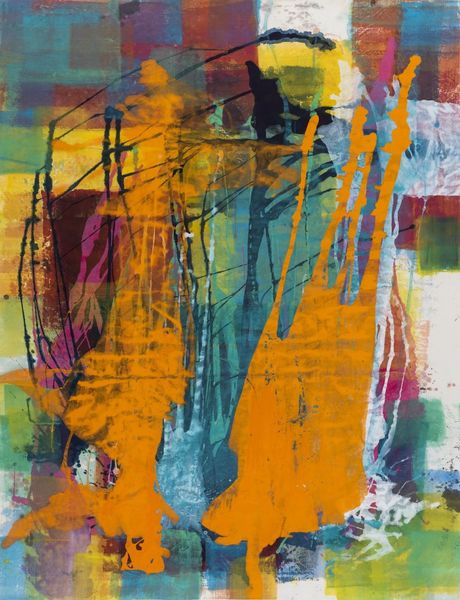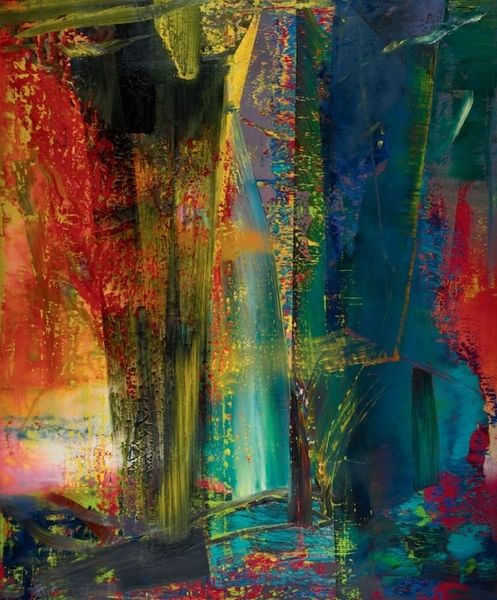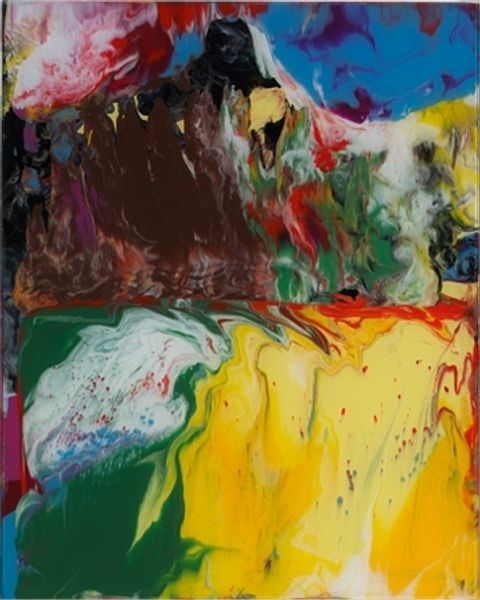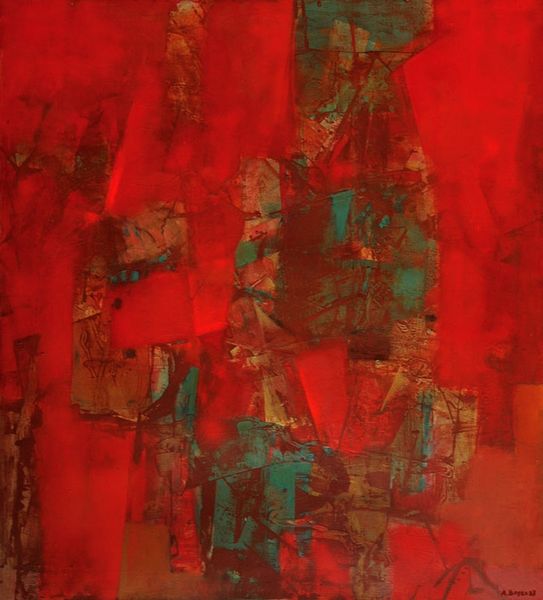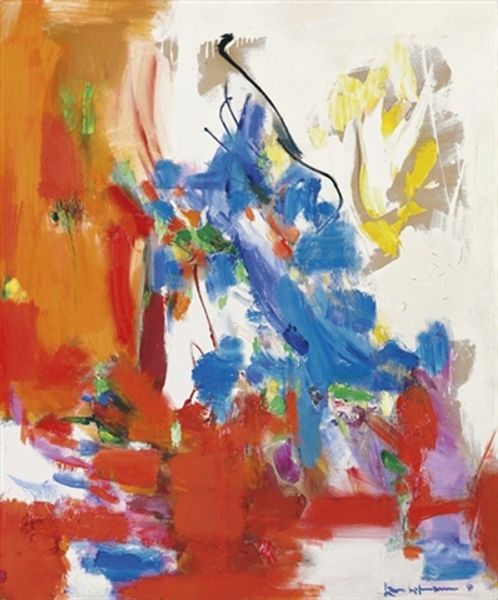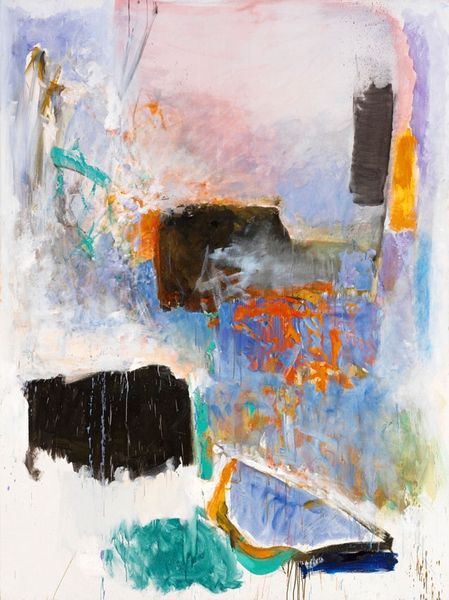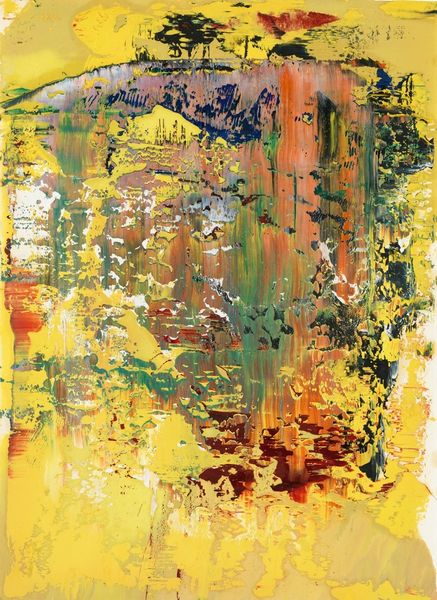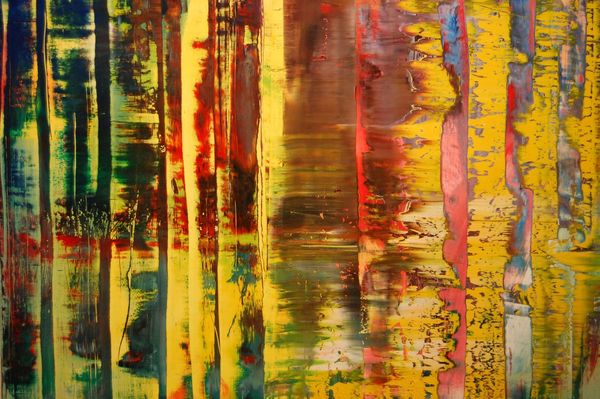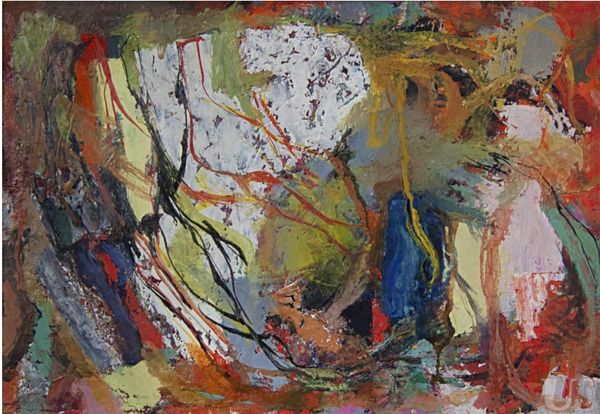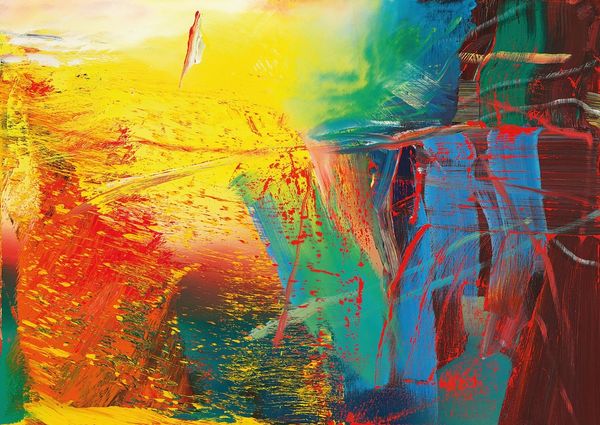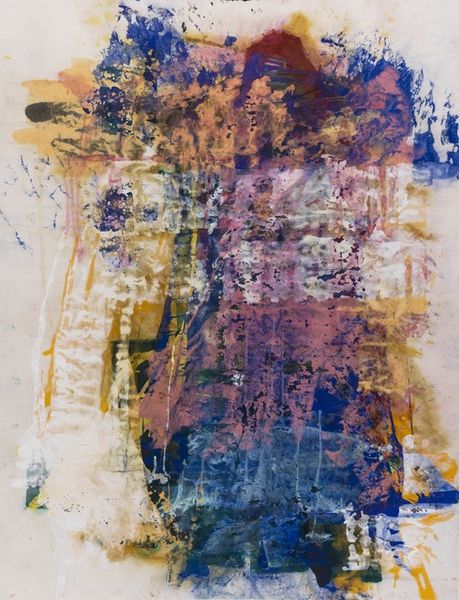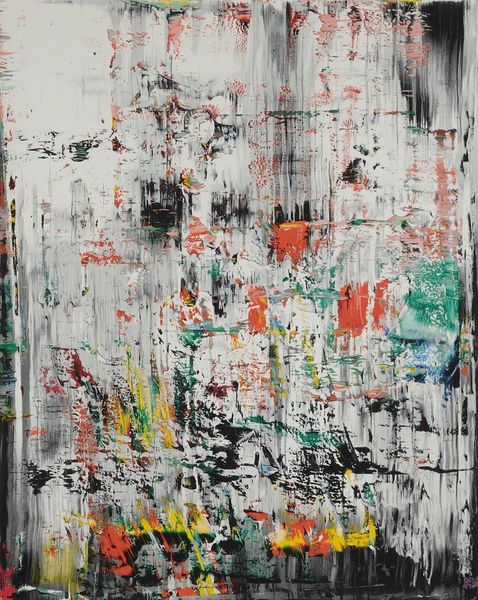
#
capitalist-realism
Copyright: 2019 Gerhard Richter - All Rights Reserved
Curator: Before us is Gerhard Richter's "Ölberg," completed in 1986. It's a mixed-media piece, primarily acrylic paint, representative of his abstract work from that period. What are your initial thoughts? Editor: A controlled explosion! I see layers upon layers, colors battling for dominance but somehow finding harmony. There’s a raw, almost visceral energy to it. It's not pretty, but it's powerfully evocative. Curator: Richter's process at this time involved building up layers of paint and then scraping them away, a technique of addition and subtraction. It reveals something about the industrial applications of art making. Editor: That makes sense. It feels almost geological, like the strata of the earth exposed by some violent event. And those yellows and oranges, set against the deeper blues and greens… reminds me of walking into a forest. It is a strange feeling. Curator: There is debate whether Richter's move to abstraction mirrors disillusionment from post-war German idealism, especially as the artwork incorporates gestures found in Abstract Expressionism, something distinctly American, but born from global displacement. Editor: I can feel that conflict, the tension. I think there’s something inherently German about that too. It’s not just pretty, it's questioning and probing, even confrontational in its abstraction. Were people upset by this piece? Curator: Reactions were certainly mixed. Richter had moved away from photo-realism and towards a kind of abstract landscape, but critics couldn't easily identify meaning in that abstraction, so questions of labor, production, and the "finished work" were interrogated heavily at this time. Editor: Well, I see that as its strength. It doesn't offer easy answers. You're forced to engage with the materiality, the textures, and your own emotional response. That scraping back is intriguing: maybe it symbolises what happens with an eraser... Or, as you mention, industry in practice. It really begs that 'what does it MEAN?' question to step aside so the process of it comes to life. Curator: Ultimately, Richter pushes the boundaries of what constitutes painting, inviting scrutiny on labor, value, and the systems surrounding contemporary art production. Editor: It's funny. Walking in I wondered, "why feature abstract-expressionism AGAIN?". Now it resonates in that push and pull way we've been discussing... Thanks, now I'll never see "just" a painting.
Comments
No comments
Be the first to comment and join the conversation on the ultimate creative platform.
